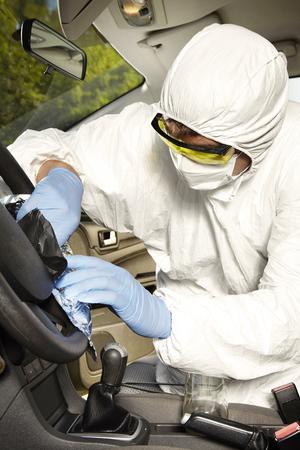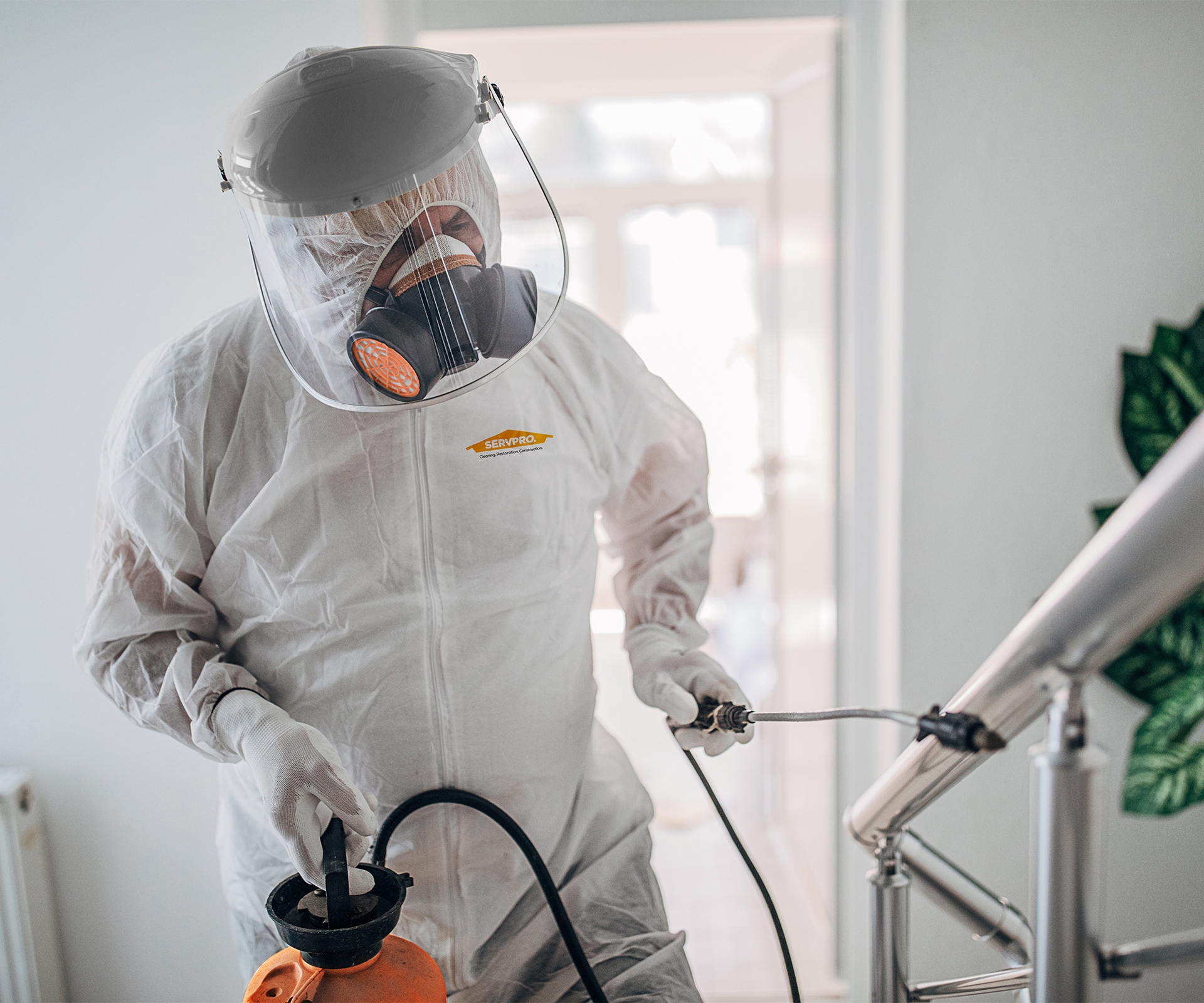Mold Remediation Providers: Shielding Your Residential Or Commercial Property from Mold Damage
Specialist Biohazard Cleansing and Decontamination for Blood, Bodily Fluids, and Hazardous Materials
The potential health and wellness risks connected with direct exposure to biohazards underscore the important need for careful handling and comprehensive cleaning. As we navigate the complex landscape of biohazard cleanup, comprehending the subtleties of policies, conformity, and the specialized devices at play comes to be vital in making certain a detailed and safe purification procedure.
Health Dangers of Biohazard Direct Exposure
Exposure to biohazards positions substantial health risks that can lead to extreme consequences for areas and people alike. Biohazards encompass a vast array of organic materials, including blood, bodily fluids, mold and mildew, microorganisms, infections, and other potentially contagious materials. When individuals enter call with these biohazards, whether through accidents, incorrect handling, or ecological direct exposure, they face the risk of having severe ailments or illness.
Among the key wellness dangers connected with biohazard exposure is the transmission of contagious conditions. Bloodborne virus such as HIV, liver disease B and C, and various germs can be existing in biohazardous products, posturing a direct risk to human wellness. Inhaling airborne biohazards like mold spores or coming into call with polluted surfaces can also bring about respiratory system problems, allergies, and other damaging wellness impacts.
Additionally, biohazard exposure can have lasting health ramifications, with some diseases manifesting years after the first get in touch with (Blood Cleanup). For that reason, it is crucial to focus on appropriate biohazard cleansing and purification to reduce these wellness dangers and ensure the safety and security of individuals and communities

Specialized Educating for Biohazard Cleanup
When it pertains to taking care of biohazard cleanup effectively and securely, specialized training plays a fundamental function in making certain proper decontamination treatments are adhered to. Biohazard cleanup needs certain knowledge and skills to successfully minimize risks related to bloodborne pathogens, bodily fluids, and harmful products. Specialists educated in biohazard cleanup undergo extensive direction on exactly how to securely take care of, get rid of, and get rid of biohazardous products to stop contamination and direct exposure.
Specialized training for biohazard cleaning covers a series of essential topics, including proper individual safety equipment (PPE) usage, bloodborne pathogen awareness, purification strategies, and hazardous waste disposal procedures. Individuals learnt biohazard clean-up are furnished with the needed knowledge to evaluate contamination levels, identify potential threats, and apply ideal cleaning treatments in compliance with regulatory standards.
Continual training and education and learning are vital in the area of biohazard cleanup to stay upgraded on the current decontamination technologies, safety methods, and guidelines. By investing in specialized training, biohazard cleanup specialists can successfully reply to emergency cleaning circumstances and safeguard both public wellness and the atmosphere.
Significance of Proper Purification Techniques
Making use of appropriate decontamination strategies is important in biohazard cleanup to properly decrease and get rid of hazardous products health threats. Effective purification not only makes certain the removal of noticeable traces of blood, physical liquids, and other biohazards yet likewise targets unseen microorganisms that might position significant health hazards if not effectively eliminated. By adhering to strict purification protocols, educated specialists can considerably lower the risk of direct exposure to unsafe bacteria, infections, and microorganisms that could cause infections or diseases.
Appropriate purification strategies involve using customized equipment and disinfectants that are particularly made to neutralize biohazards successfully. Detailed cleaning and disinfection of polluted locations are crucial to prevent the spread of pathogens and make sure a secure setting for occupants. Additionally, the appropriate disposal of biohazardous waste complying with purification treatments is essential in preventing contamination of other surfaces or individuals.

Devices and Tools for Safe Cleanup
The proper equipment and devices play a crucial role in making certain the secure and efficient cleaning of biohazardous products. When taking care of blood, bodily fluids, or dangerous materials, biohazard cleansing experts count on specialized gear to decrease direct exposure risks and thoroughly sanitize the afflicted location. Individual protective tools (PPE) such as handwear covers, safety glasses, coveralls, and masks are vital to secure versus direct call with possibly contagious products. In addition, biohazard cleansing packages containing disinfectants, absorptive materials, and biohazard bags are utilized to securely contain and get rid of of polluted items. Blood Cleanup.
Advanced cleansing tools like hospital-grade disinfectants, HEPA-filtered vacuum cleaners, and misting machines are utilized to disinfect surface areas and remove biohazards successfully. Specialized tools such as sharps containers and biohazard waste disposal bins are used to securely take care of sharp things and biohazardous waste materials. By utilizing the best devices and devices, biohazard cleansing specialists can ensure a complete cleaning process that prioritizes safety and reduces health and wellness dangers for both employees and passengers of the damaged room.
Regulations and Compliance in Biohazard Cleaning
Proper adherence to regulations and compliance standards is critical in biohazard cleaning to guarantee the security of both workers and the atmosphere. Government companies such as OSHA (Occupational look at here now Security and Health And Wellness Management) and the EPA (Environmental Security Company) have established particular standards for biohazard clean-up treatments to reduce health and wellness dangers and ecological contamination. These guidelines cover a variety of elements consisting of the handling, transport, and disposal of biohazardous materials, in addition to the required training and protective equipment needed for personnel associated with the cleaning procedure.
Biohazard cleaning companies must stay current with these guidelines to ensure that their operations fulfill the needed security standards. Failing to follow these policies can result in extreme repercussions, including penalties, lawful action, and threatening the health and wellness of individuals and the setting. By complying with stringent laws and compliance measures, biohazard cleansing companies can properly reduce risks and make sure a complete and risk-free cleanup procedure for all parties included.
Conclusion
To conclude, biohazard cleaning and decontamination clean up biohazard absorbent need customized training, appropriate strategies, and adherence to policies. Direct exposure to blood, bodily fluids, and unsafe materials postures considerable wellness risks, making it vital to use the ideal equipment and tools for secure cleanup. By complying with strict procedures and standards, professionals can successfully minimize the dangers connected with biohazard direct exposure and ensure the security of both themselves and others.
As we browse the intricate landscape of biohazard cleanup, comprehending the subtleties of laws, compliance, and the specific devices at play comes to be necessary in ensuring a thorough and risk-free purification procedure. (Blood Cleanup)
When it comes to handling biohazard cleanup effectively and safely, specialized training plays an essential duty in ensuring proper decontamination treatments are complied with.Making use of appropriate purification techniques is vital in biohazard clean-up to efficiently decrease and remove unsafe products wellness threats. In addition, biohazard cleaning sets including disinfectants, absorbent products, and biohazard bags are made use of to securely dispose and have of infected products.
Government agencies such as OSHA (Occupational Safety Get More Information And Security and Wellness Management) and the EPA (Environmental Protection Agency) have actually established particular standards for biohazard cleaning procedures to minimize wellness dangers and environmental contamination.